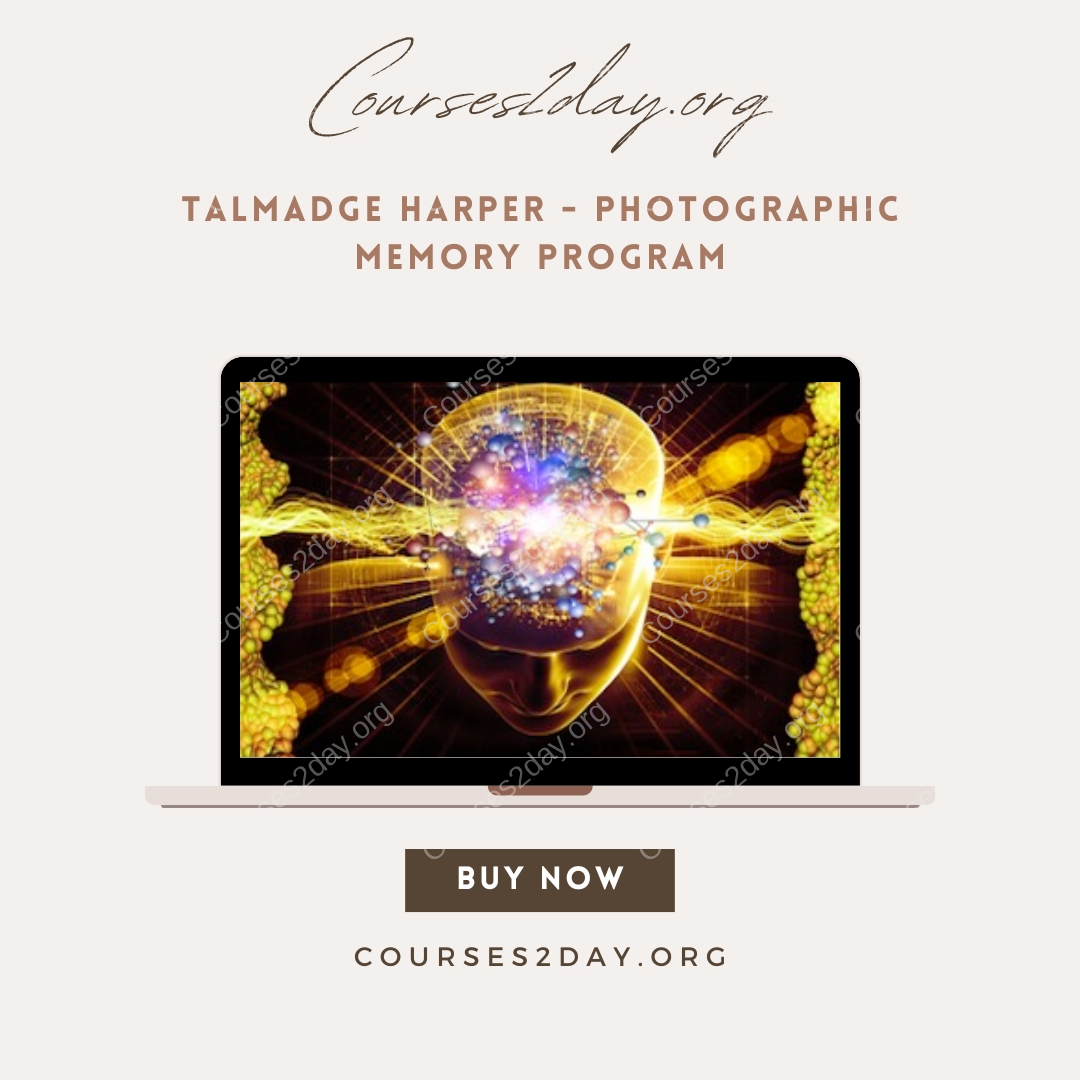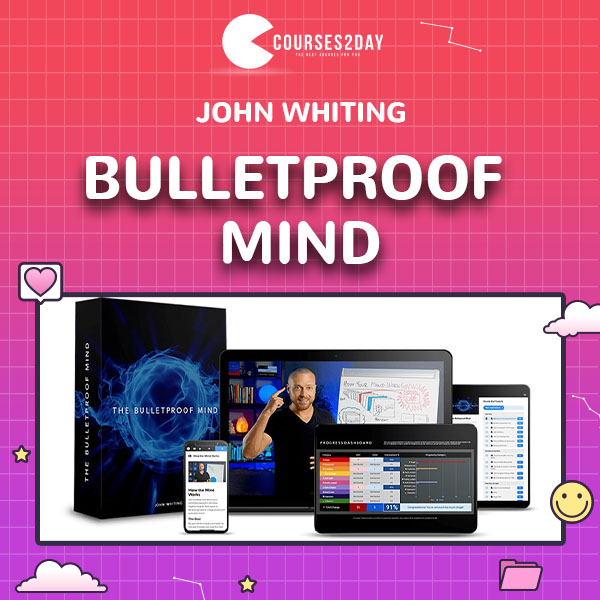Talmadge Harper – Photographic Memory Program
You refer to the Talmadge Harper – Photographic Memory Program course at Courses2day.org. Below is information about this course
Name of course: Talmadge Harper – Photographic Memory Program
Delivery Method: Instant Download (Mega.nz, GG Drive, Box)
Contact us to purchase and check more information: [email protected]
Sale Page:https://bit.ly/Courses2dayLibrary (More information)
Take more courses at: SHOP
Knowledge of Seo, Business, Cryptocurrency…: BLOG
This review article of Courses2day.org was compiled based on student feedback. Customers can carefully check the author’s sales page to update the most complete information.
Talmadge Harper – Photographic Memory Program: A Comprehensive Review
Overview of the Talmadge Harper – Photographic Memory Program
The Talmadge Harper – Photographic Memory Program aims to equip individuals with the skills and techniques to significantly enhance their memory capabilities. It is not about literally developing a photographic memory, as that is often misunderstood, but rather about mastering strategies to encode, store, and retrieve information more effectively. The program focuses on improving memory recall for various purposes, from academic studies to professional tasks and everyday life. It promises to help learners remember names, faces, facts, figures, and other types of information with greater ease and accuracy. The core objective is to empower participants to unlock their memory potential and leverage it for personal and professional growth. The Talmadge Harper – Photographic Memory Program emphasizes practical application, providing tools that can be immediately integrated into daily routines.
Key Features and Components
The Talmadge Harper – Photographic Memory Program is structured around several key modules, each designed to build upon the previous one. This progressive learning approach ensures that participants gradually develop a strong foundation in memory techniques.
Memory Foundation Module
This introductory module lays the groundwork for understanding how memory works. It covers the different types of memory, the encoding process, storage mechanisms, and retrieval strategies. Understanding these fundamentals is crucial for applying the advanced techniques taught later in the program. This section also debunks common myths about memory and emphasizes that memory improvement is a skill that can be learned and developed through practice. Participants learn about the importance of focus, attention, and minimizing distractions when encoding information. The Talmadge Harper – Photographic Memory Program stresses the importance of a positive mindset and belief in ones ability to improve their memory.
The Association Technique
A core element of the Talmadge Harper – Photographic Memory Program is the association technique. This involves creating vivid and memorable associations between new information and things you already know. The more bizarre, unusual, and emotionally engaging the association, the better the recall. The program provides detailed guidance on how to create these associations effectively, using visualization, imagination, and sensory details. Learners are encouraged to use all their senses to create rich and multi-layered associations that are easier to remember. The Talmadge Harper – Photographic Memory Program also teaches how to link multiple pieces of information together in a chain, creating a narrative that aids in recall.
The Location Technique (Memory Palace)
The Location Technique, also known as the Memory Palace or Method of Loci, is a powerful mnemonic device that involves associating information with specific locations in a familiar environment. The Talmadge Harper – Photographic Memory Program teaches participants how to create their own Memory Palaces and effectively place information within them. Learners are guided through the process of selecting a suitable location, identifying distinct landmarks within that location, and creating vivid images that link the information to be remembered with those landmarks. The program emphasizes the importance of spatial awareness and mental imagery in creating effective Memory Palaces. The Talmadge Harper – Photographic Memory Program demonstrates how this technique can be used to remember lists, speeches, and other sequential information.
Advanced Memory Techniques
Beyond the foundational techniques, the Talmadge Harper – Photographic Memory Program delves into more advanced methods, such as the number-shape system, the number-rhyme system, and techniques for remembering names and faces. These systems provide structured frameworks for encoding and recalling specific types of information. The number-shape system involves associating numbers with specific shapes, while the number-rhyme system involves associating numbers with rhyming words. These systems can be used to memorize dates, phone numbers, and other numerical data. The Talmadge Harper – Photographic Memory Program provides practical exercises and examples to help learners master these advanced techniques. For remembering names and faces, the program teaches techniques such as associating a person’s name with a prominent feature on their face and creating a mental image that connects the two.
Practical Applications and Exercises
Throughout the Talmadge Harper – Photographic Memory Program, there is a strong emphasis on practical application. Each module includes exercises and activities designed to reinforce the concepts and techniques learned. These exercises range from simple memory challenges to more complex tasks that simulate real-world scenarios. Learners are encouraged to apply the techniques to their own areas of interest and to track their progress over time. The Talmadge Harper – Photographic Memory Program provides templates and tools for creating memory aids and tracking performance. Regular practice is essential for developing and maintaining strong memory skills, and the program provides guidance on how to incorporate memory training into daily routines.
Benefits for Potential Learners
The Talmadge Harper – Photographic Memory Program offers a range of benefits for individuals seeking to improve their memory. These benefits extend to various aspects of life, from academic performance to professional success and personal development.
Improved Academic Performance
Students can benefit significantly from the Talmadge Harper – Photographic Memory Program by improving their ability to remember facts, figures, dates, and other information required for their studies. The techniques taught can be applied to memorize vocabulary, historical events, scientific concepts, and mathematical formulas. The program also helps students improve their concentration and focus, which are essential for effective learning. By mastering the techniques taught in the Talmadge Harper – Photographic Memory Program, students can reduce their reliance on rote memorization and develop a deeper understanding of the material. This can lead to improved grades, increased confidence, and a more enjoyable learning experience.
Enhanced Professional Skills
Professionals in various fields can leverage the Talmadge Harper – Photographic Memory Program to enhance their skills and advance their careers. The ability to remember names, faces, details, and presentations is crucial for building relationships, closing deals, and delivering effective communication. The program can also help professionals improve their problem-solving skills by enhancing their ability to recall relevant information. Sales professionals can use the techniques to remember customer details and preferences, while managers can use them to remember employee names and responsibilities. The Talmadge Harper – Photographic Memory Program can also help professionals improve their public speaking skills by enabling them to memorize speeches and presentations with ease.
Personal Development
Beyond academic and professional benefits, the Talmadge Harper – Photographic Memory Program can contribute to personal development by boosting confidence, improving cognitive function, and enhancing overall quality of life. The ability to remember names and faces can improve social interactions and build stronger relationships. The program can also help individuals improve their mental agility and cognitive flexibility. By challenging themselves to learn and apply new memory techniques, participants can stimulate their brains and maintain cognitive health as they age. The Talmadge Harper – Photographic Memory Program can also help individuals pursue their hobbies and interests by enabling them to remember facts, figures, and techniques related to those activities.
Unique Aspects of the Talmadge Harper – Photographic Memory Program
Several aspects distinguish the Talmadge Harper – Photographic Memory Program from other memory improvement programs. One key differentiator is its focus on practical application and real-world scenarios. The program is not just about learning memory techniques; it is about applying those techniques to solve problems and achieve goals.
Emphasis on Visualization and Imagination
The Talmadge Harper – Photographic Memory Program places a strong emphasis on visualization and imagination as key components of effective memory. Learners are encouraged to create vivid and engaging mental images to encode and recall information. The program provides guidance on how to use all the senses to create rich and multi-layered mental images. This approach leverages the brains natural ability to process and remember visual information. The Talmadge Harper – Photographic Memory Program also teaches techniques for enhancing imagination and creativity, which can further improve memory performance.
Personalized Approach to Learning
The Talmadge Harper – Photographic Memory Program encourages learners to personalize the techniques to suit their own learning styles and preferences. The program provides a range of techniques and strategies, and learners are encouraged to experiment with different approaches to find what works best for them. The program also emphasizes the importance of self-reflection and tracking progress over time. By monitoring their performance and identifying areas for improvement, learners can tailor their training to maximize their results. The Talmadge Harper – Photographic Memory Program also provides access to a supportive community of learners, where participants can share their experiences and learn from each other.
Expected Outcomes and Goal Achievement
Participants who diligently follow the Talmadge Harper – Photographic Memory Program can expect to see significant improvements in their memory capabilities. The specific outcomes will vary depending on individual effort and commitment, but common results include:
Improved recall of names and faces
Enhanced ability to memorize facts and figures
Increased concentration and focus
Greater confidence in memory abilities
Improved academic performance
Enhanced professional skills
Personal growth and development
The Talmadge Harper – Photographic Memory Program provides the tools and techniques necessary to achieve these outcomes, but it is up to the individual to put in the effort and practice required to master them. The program emphasizes the importance of setting realistic goals, tracking progress, and celebrating successes along the way. By following the program and committing to regular practice, learners can unlock their memory potential and achieve their goals effectively. The Talmadge Harper – Photographic Memory Program is designed to empower individuals to take control of their memory and use it to enhance their lives in meaningful ways. Talmadge Harper – Photographic Memory Program













